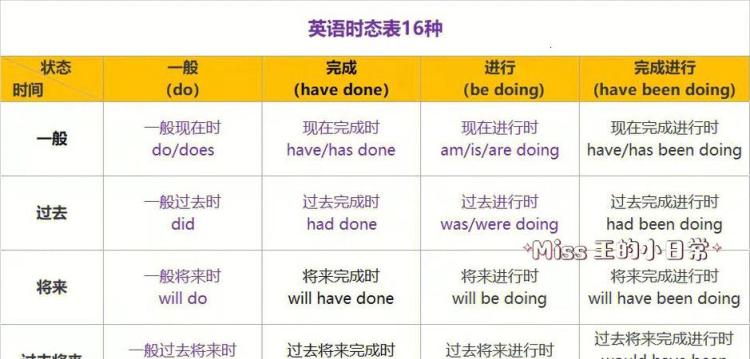英语的时态包括简单现在时、现在进行时、简单过去时、过去进行时、现在完成时、过去完成时、将来进行时和将来完成时,每种时态都有其特定的用途和表达方式。掌握这些时态的用法,可以使英语表达更加准确、流畅和自然。

简单现在时(Simple Present)
表示现在经常或一直发生的动作或状态。例如:I eat breakfast every morning.
现在进行时(Present Continuous)
表示现在正在进行的动作。例如:She is studying in the library right now.
简单过去时(Simple Past)
表示过去发生的动作或状态。例如:I watched a movie last night.
过去进行时(Past Continuous)
表示过去某一时刻正在进行的动作。例如:She was playing tennis when it started to rain.
现在完成时(Present Perfect)
表示过去发生的动作对现在仍有影响或关联。例如:I have lived in this city for 10 years.
过去完成时(Past Perfect)
表示过去某一时刻或动作之前已经完成的动作。例如:I had finished my homework by the time my friend arrived.
将来进行时(Future Continuous)
表示将来某一时刻正在进行的动作。例如:I will be watching a movie at this time tomorrow.
将来完成时(Future Perfect)
表示将来某一时刻之前已经完成的动作。例如:By this time next year, I will have graduated from college.

